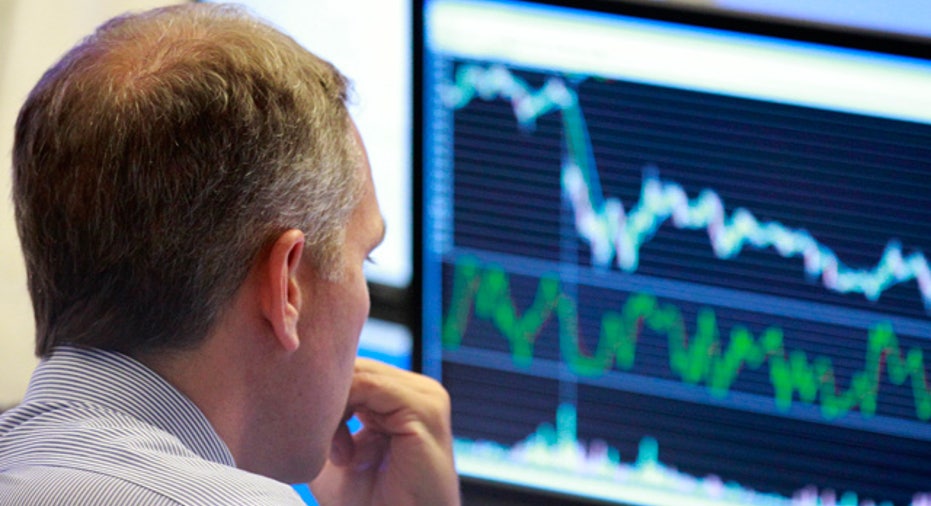Dollar, Equities Forge Stronger Inverse Ties as Fed Embarks on QE3

Opponents of QE3 warn that the Federal Reserve’s latest easy-money program will further erode the value of the U.S. dollar. But that erosion could actually provide a jolt for equity prices, which have increasingly moved in the opposite direction of the greenback.
According to new data from S&P Capital IQ, the inverse relationship between the S&P 500 and the U.S. dollar has increased meaningfully in the past three years when compared with historical averages.
This close relationship may help explain why even some people who believe the Fed’s quantitative easing policies are unwise concede they are bullish in the short- and medium-term for stock prices.
“All sectors in the S&P 500 are today much more sensitive to the swings in the value of the U.S. dollar than before,” Sam Stovall, chief investment strategist at McGraw-Hill’s (NYSE:MHP) S&P Capital IQ, wrote in a note.
Closer Ties
Stovall said that since 1990 the rolling 36-month correlation between the U.S. Dollar Index and the S&P 500 has averaged just -0.19 -- not a very cozy inverse relationship considering a reading of -1 indicates they move perfectly in the opposite direction.
However, over the past 36 months that correlation tumbled to -0.69, a substantial decline and an indication of a much stronger inverse relationship.
The link between equities and the greenback is most pronounced in the S&P 500 energy and materials sectors, two sectors that are very responsive to fluctuations in commodities, which are often traded in dollars.
The correlation for the energy sector, which includes big-name companies like ExxonMobil (NYSE:XOM) and Chevron (NYSE:CVX), has climbed to -0.68 over the past 36 months, compared with the historical 36-month average of just -0.33, S&P said.
Materials stocks now have a correlation of -0.67, up significantly from the rolling 36-month average of -0.25 since 1990.
Other sectors seem to be much less tied to the fate of the greenback, including telecom and utilities, each of which have correlations below -.40 over the past three years, S&P said.
Euro Plays Key Role
There are likely a number of factors that can help explain the growing sway of the U.S. dollar over equities, highlighted by the never-ending eurozone crisis.
That’s because the U.S. Dollar Index is a futures contract that measures the greenback against a weighted basket of currencies, many of which are closely tied to the finances of the much-maligned eurozone.
The index, which is traded on the Intercontinental Exchange (NYSE:ICE), places a whopping 57.6% weighting on the euro. When the British pound, Swedish krona and Swiss franc are included, more than 77% of the index is comprised of European currencies.
Given the turmoil in Europe, it only makes sense that the U.S. dollar, which is still seen as the world’s safe-haven currency, would gain against this basket of currencies at times when cash flees riskier assets like equities.
“Any time you have the news dominated not only the crisis in Europe but Middle Eastern tensions, you’re going to have a lot more money pushing the dollar up” and weighing on equity prices, said Bruce McCain, chief investment strategist at KeyCorp.’s (NYSE:KEY) Key Private Bank.
At the same time, equity investors don’t usually like to see the U.S. dollar gain too much ground against rival currencies because it makes goods and services provided by the likes of Coca-Cola (NYSE:KO) and IBM (NYSE:IBM) more expensive overseas, hurting exports.
Correlations Can Shift
Some market participants caution against reading too much into the links between stock prices and the direction of the greenback.
“I look at the value of the dollar all the time. But I don’t look at the currency markets as the driving force behind why the equity markets move,” said Jason Weisberg, a floor trader at the New York Stock Exchange and senior vice president at Seaport Securities.
Weisberg also noted that relationships between asset prices often change, pointing to old theories that stocks and commodities can’t rise in tandem.
“There are a lot of things going on in today’s markets that have decoupled with once steadfast rules,” he said.
It’s also true that the correlations can vary in magnitude, as the shift over the past 36 months between stocks and the dollar has demonstrated.
“These correlations are inherently unstable,” said Marc Chandler, global head of currency strategy at Brown Brothers Harriman, noting that the U.S. Dollar Index and S&P 500 had a much smaller negative correlation at the start of 2011. “I recognize it’s negatively correlated now but… it can swing around quite a bit.”
Dollar-Sensitive Sectors
Still, S&P’s Stovall said QE3 has “opened the floodgates of liquidity, which, like a boater drifting too close to Niagara Falls, has swamped the dollar, at least for the time being.”
Using these 36-month correlations, investors can determine which areas of the market are “most likely to be buoyed by this turn of events,” he said.
Which sectors bear watching?
Since October 2009, Stovall said 10 of the S&P 500’s 132 sub-industries have a correlation of -0.65 or less, including personal products, diversified, chemicals, data processing/outsourced services, systems software, construction/farm machinery/heavy trucks and consumer finance.